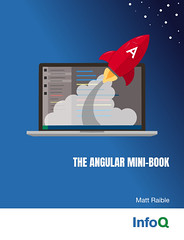Building a REST API with JAXB, Spring Boot and Spring Data
 If someone asked you to develop a REST API on the JVM, which frameworks would you use? I was recently tasked with such a project.
My client asked me to implement a REST API to ingest requests from a 3rd party. The project entailed consuming XML
requests, storing the data in a database, then exposing the data to internal application with a JSON endpoint.
Finally, it would allow taking in a JSON request and turning it into an XML request back to the 3rd party.
If someone asked you to develop a REST API on the JVM, which frameworks would you use? I was recently tasked with such a project.
My client asked me to implement a REST API to ingest requests from a 3rd party. The project entailed consuming XML
requests, storing the data in a database, then exposing the data to internal application with a JSON endpoint.
Finally, it would allow taking in a JSON request and turning it into an XML request back to the 3rd party.
With the recent release of Apache Camel 2.14 and my success using it, I started by copying my Apache Camel / CXF / Spring Boot project and trimming it down to the bare essentials. I whipped together a simple Hello World service using Camel and Spring MVC. I also integrated Swagger into both. Both implementations were pretty easy to create (sample code), but I decided to use Spring MVC. My reasons were simple: its REST support was more mature, I knew it well, and Spring MVC Test makes it easy to test APIs.
Camel's Swagger support without web.xml
As part of the aforementioned spike, I learned out how to configure Camel's REST and Swagger support using Spring's
JavaConfig and no web.xml. I made this into a sample project and put it on GitHub as
camel-rest-swagger.
This article shows how I built a REST API with Java 8, Spring Boot/MVC, JAXB and Spring Data (JPA and REST components). I stumbled a few times while developing this project, but figured out how to get over all the hurdles. I hope this helps the team that's now maintaining this project (my last day was Friday) and those that are trying to do something similar.
[Read More]





